Culture and Heritage
Welcome to the Herzegovina Wine Route, where stunning landscapes, unique culture, and world-class wines combine to offer a memorable experience for wine and culture enthusiasts alike.
This picturesque region showcases the best of Bosnia and Herzegovina, from the breathtaking views in Mostar to the historic charm of Trebinje, Ljubuški with the oldest museum in Bosnia and Herzegovina, religious and pilgrimage sites, and UNESCO sites like the Old Bridge and Radimlja necropolis.
The Herzegovina Wine Route is home to a vibrant wine and religious heritage, with iconic places to explore such as the pilgrimage site in Medjugorje, the Tekke in Blagaj, and the monasteries around Trebinje. Other highlights include the Tvrdos Monastery, the Rabi Moša Danon site in Stolac, and the numerous vineyards that dot the landscape. Whether you’re looking to explore the region’s spiritual side or its winemaking traditions, the Herzegovina Wine Route offers a unique insight into the culture and history of the region.
HWR
Culture and Heritage
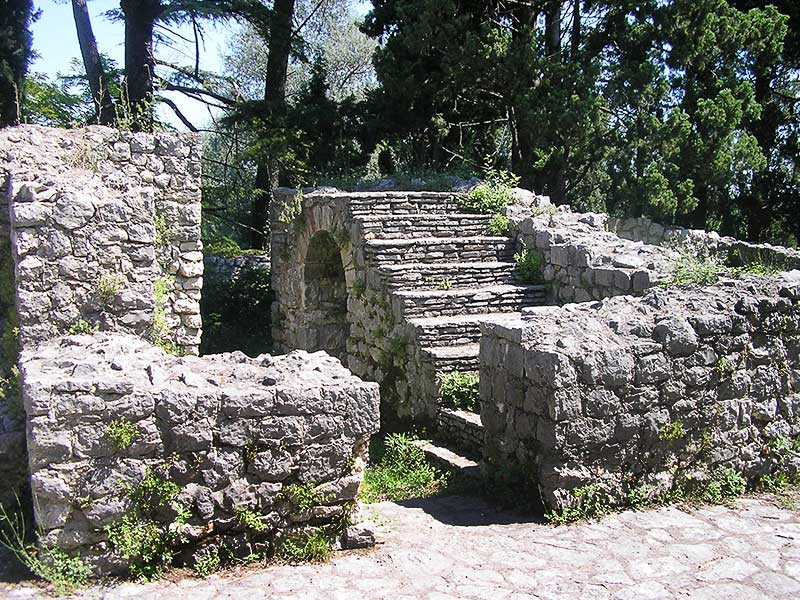
Antique Villa Mogorjelo
Mogorjelo is one of the most important monuments of the Roman era in Bosnia and Herzegovina and belongs to the most beautiful buildings of late antique architecture. Mogorjelo supplied the Roman city of Narona and probably served in the defense of the city and its surrounding, a dense grove of coastal trees (cypress) gives this monument a particularly beautiful frame. The building was excavated between 1889 and 1903, and in the following years it was conserved, being declared as a national monument in 2002.
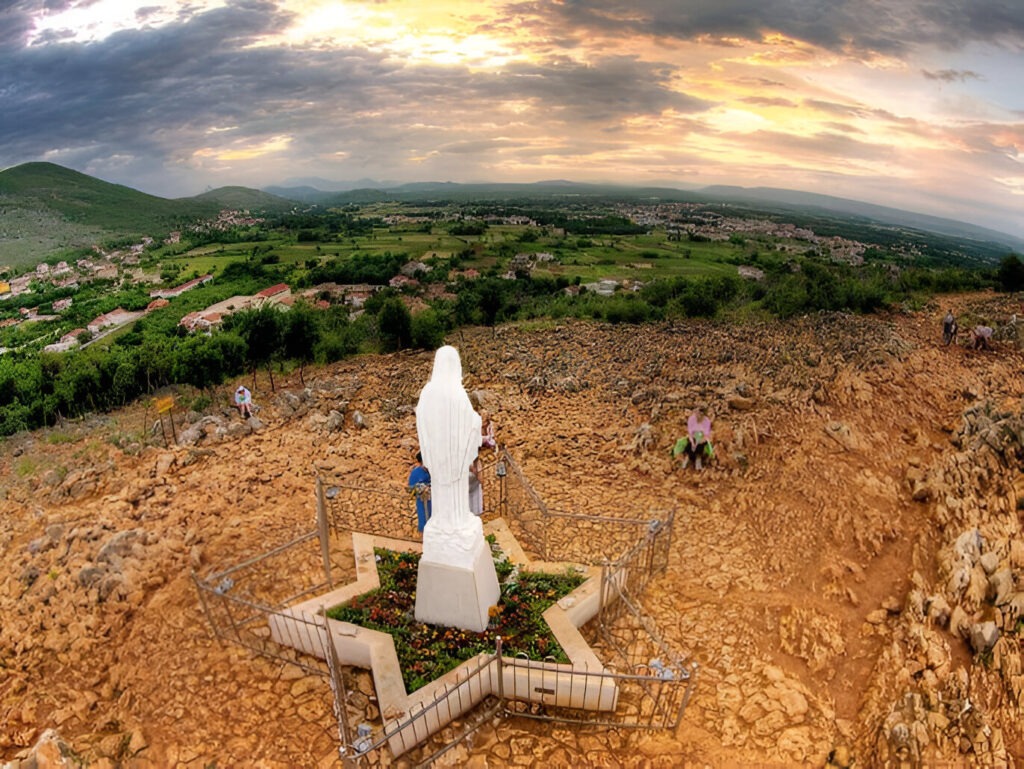
Apparition Hill and the Blue Cross
Apparition Hill and the Blue Cross in Medjugorje hold profound spiritual significance for millions of pilgrims worldwide. Medjugorje is a renowned pilgrimage site where, since June 1981, six young visionaries have reported regular apparitions of the Virgin Mary. Apparition Hill, or Podbrdo, is the site where the first apparition allegedly occurred, drawing countless devotees seeking solace, healing, and spiritual renewal. On the other hand, the Blue Cross, situated at the base of Apparition Hill, has become a place of intense prayer and reflection, where visitors meditate on the sufferings of Christ and present their intentions to the Virgin Mary. Both sites have become symbols of hope and faith, attracting people from various backgrounds to seek divine encounters and experience the transformative power of Medjugorje’s spiritual atmosphere.
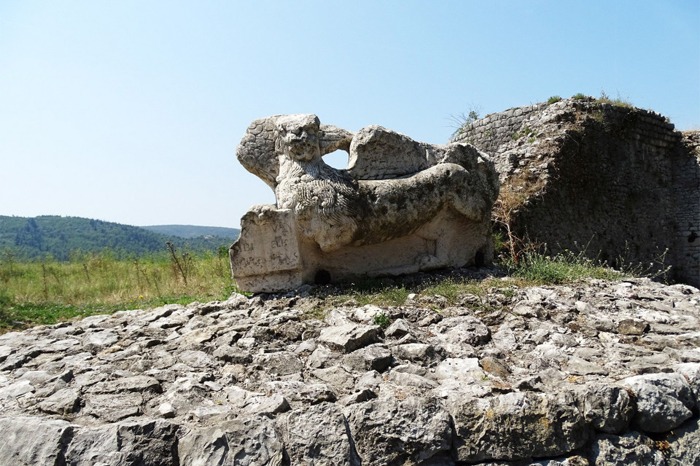
Archaeological site Gabela
Gabela is a national cultural monument of Bosnia and Herzegovina. Due to its strategic location, Gabela was also inhabited in Roman times, from which we have the remains of a brick factory and farm buildings on the outskirts of the town. Of the large number of medieval buildings, the remains of the old fort and a stone plaque with a large winged lion, the symbol of the Republic of Venice, are the most impressive to this day. Gabela was from the 15th to the 18th century a large trading center, but also an important strategic fortress on the Venetian-Turkish border. At one time it was known as the slave square. Various political and economic interests were competing for supremacy over Gabel. The Turks occupied it in 1477, and after several failed attempts in 1694, the Venetians occupied Gabela, then with the Peace of Požarevac in 1718, Gabela belonged to the Turks, and the Venetians demolished all the important buildings. Gabela is again under Turkish administration, but without its former power. During the Austro-Hungarian rule and the construction of the narrow-gauge railway, Gabela was a junction from Sarajevo to Dubrovnik and Metković. The Mexican scientist Roberto Salinas Price developed a hypothesis based on geographical information in the Iliad that the Trojan War was in the valley of the Neretva River, that is, that Gabela was Ilios, the capital of the state of Troy.
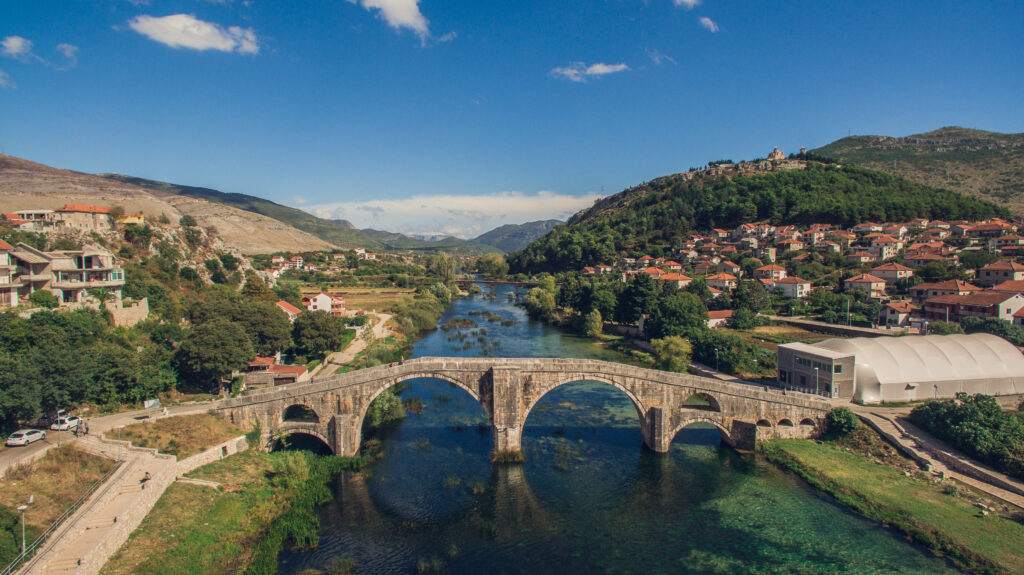
Arslanagić Bridge
Water is one of the most important natural resources of east Herzegovina. Trebišnjica possesses a vast unused potential, and it used to be the longest sinking river in Europe (98km). It is precisely in Trebinje where its beauty takes a full form. Banks of Trebišnjica are intertwined with many bridges, one of those standing out with exceptional beauty is the Arslanagić bridge, most famous monument from the Ottoman period in Trebinje. The Bridge played a very important role in Balkan architecture of 16th century. Mehmed-Pasha Sokolović built the bridge 1574 in honor to his son who was killed in the battle with Venice. When Turks got pushed away from Herceg Novi in 1687, many Turkish families moved from this town to Trebinje. A certain individual named Arslan-aga was among them. He was given land east of Trebinje: Zupci, Necvijeće and Jasen, and was also put in charge of collecting fee people had to pay to cross this bridge. Since that, this bridge was named after him – Arslanagić (Arslan-aga) bridge. With the construction of hydropower system on Trebišnjica in 1965 the bridge got submerged under the newly created reservoir lake. However, in 1966 the Institute for Protection of Cultural Monuments requested the bridge to be moved upstream to the new location – between Gradina (right river bank) and Police (left).
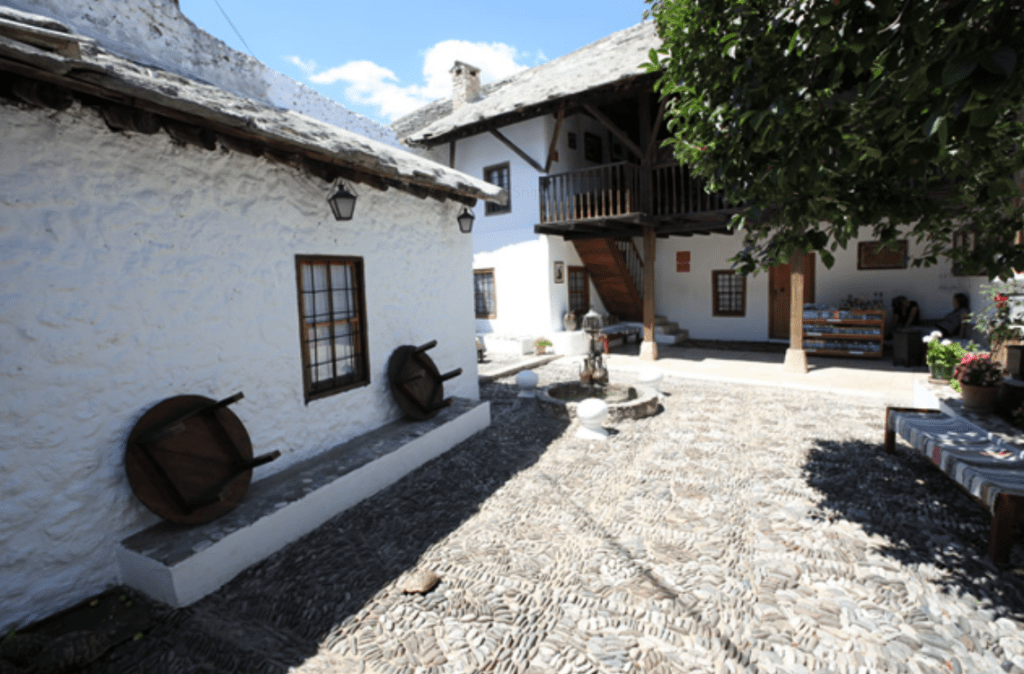
Bišćević House
In order to breathe in the atmosphere of daily life during the Ottoman period, all one needs to do is visit one of the three Turkish dwellings still present in town: these are the houses of the influential Bišćević (1635), Kajtaz (18th century) and Muslibegović (end of 19th century). Intriguing and well-maintained antique dwellings testify in detail to the residential style and to the real flavour of domestic life in that period. Each house is surrounded by high walls to protect the intimacy of Muslim family life. The delightful internal courtyards have characteristic decorations on the floors, romantic fountains, exotic plants, flowers and fruit trees. Comfort reigns supreme in these interiors, with objects of daily use, precious carpets and small libraries with rare texts. To visit a Turkish residence is a way to come into touch with a reality often only imagined and then to take it away with you, once you have returned home.
Opening times: every day from 8:00 am to 8:00 pm
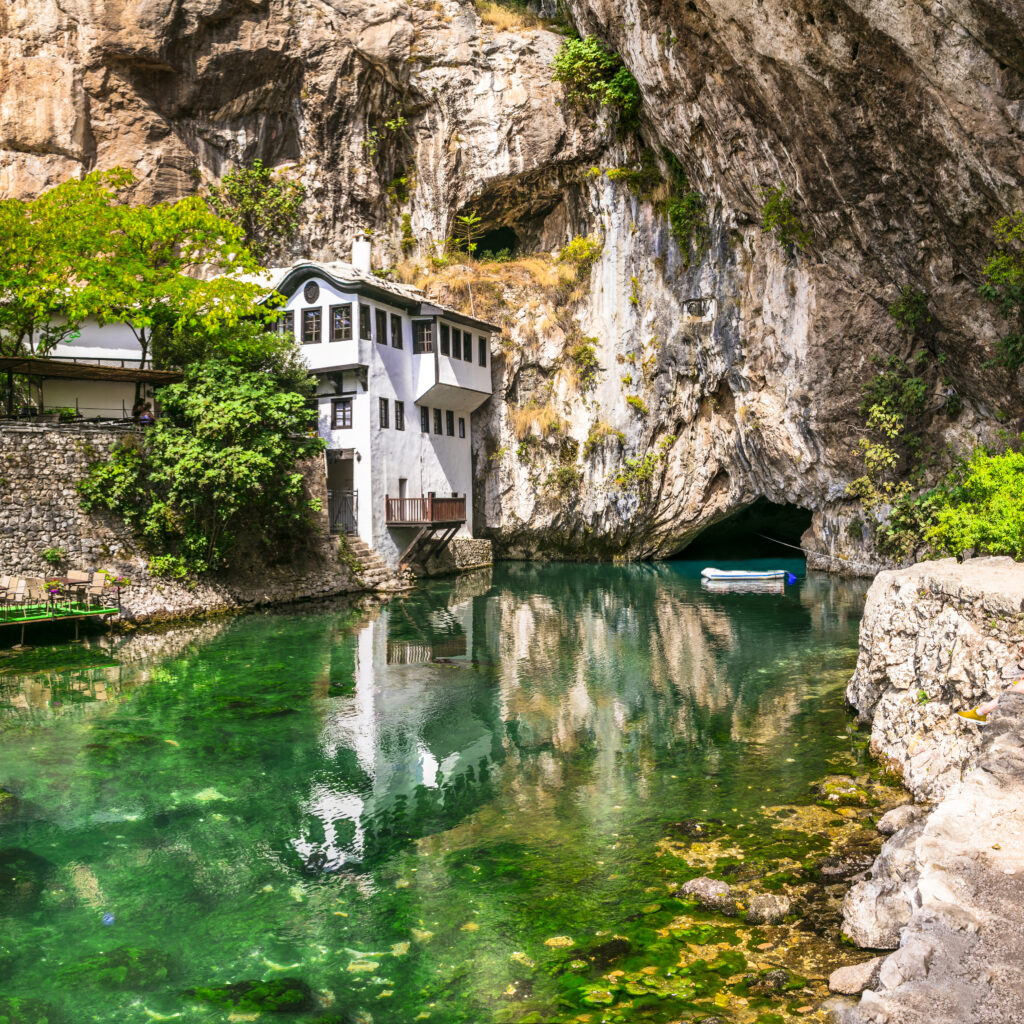
Blagaj Tekke – Dervish House
Just 12 km from Mostar, on the river Buna, lies the enchanting town of Blagaj, a medieval city from which today’s Herzegovina emerged. The ruins of the old city or Herceg Stjepan’s Tower offer a breathtaking panorama of the Neretva valley. Nearby attractions include the Velagić House, Sulejman’s Mosque, Karađozbeg’s Bridge, and the Tekija—a 16th-century house of prayer and meditation. Blagaj, with its picturesque scenery and the spectacular Buna River spring, is a treasure not to be missed.
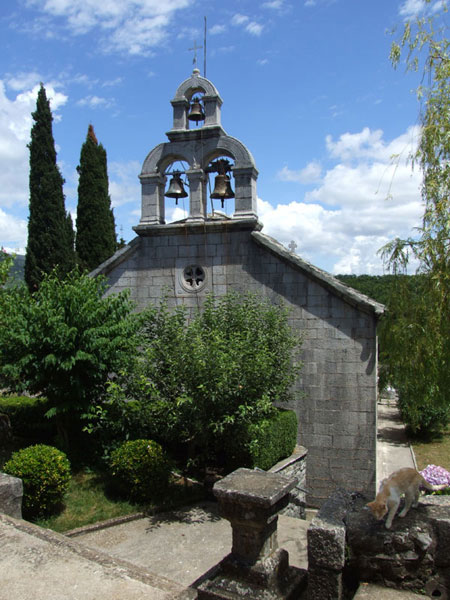
Duži Monastery
The Duži monastery is located 12 km south of Trebinje in the area of the Trebinje Forest. At the end of the 17th century, on the site of today’s monastery, there was a small church with auxiliary buildings that housed the monks who looked after the livestock of the Tvrdoš monastery. After the destruction of the Tvrdoš monastery by the Venetians in 1694, part of the brotherhood went to the Savina monastery (Herceg Novi) carrying with them some of the valuable monastery relics. The second part of the brotherhood goes to the Duži monastery, transferring the remaining part of the relics, but also the glory of the Tvrdoš monastery , the Assumption of the Blessed Virgin Mary. In the Turkish destruction, almost all the goods of the Tvrdoš monastery, transferred to Duža, perished. Until the abolition of the Patriarchate of Peć in 1776, the monastery was the center of the Metropolitanate of Herzegovina. After World War I, the monastery was home to Russian monks, exiled from Imperial Russia, who painted the monastery. With the renovation of the Tvrdoš monastery in 1992, its glory was restored, and the Duža monastery was restored to its original glory as the “Cover of the Blessed Virgin Mary”.
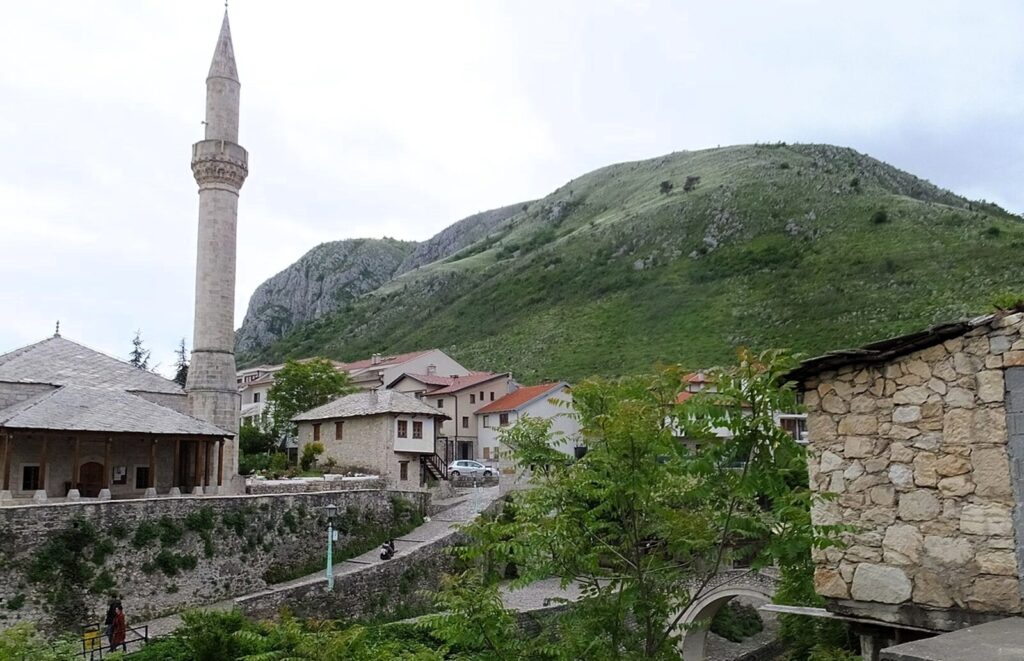
Hadzi-Kurt Mosque (Tabačica)
This mosque was built between the 16th and 17th centuries, as desired by Hajji Kurt, member of the ancient Mostar Kurt family. Standing on the right bank of the Neretva River, about 100 metres from the Old Bridge, this mosque was next to the antque Tabhana, the district where leather processing workshops were once found; and this fact reveals the mystery of its name, deriving actually from the term Tabaci (leather tanners). A row of small shops and its location make the Tabačica mosque one of the most frequently visited in Mostar.

Antique Villa Mogorjelo
Mogorjelo is one of the most important monuments of the Roman era in Bosnia and Herzegovina and belongs to the most beautiful buildings of late antique architecture. Mogorjelo supplied the Roman city of Narona and probably served in the defense of the city and its surrounding, a dense grove of coastal trees (cypress) gives this monument a particularly beautiful frame. The building was excavated between 1889 and 1903, and in the following years it was conserved, being declared as a national monument in 2002.

Apparition Hill and the Blue Cross
Apparition Hill and the Blue Cross in Medjugorje hold profound spiritual significance for millions of pilgrims worldwide. Medjugorje is a renowned pilgrimage site where, since June 1981, six young visionaries have reported regular apparitions of the Virgin Mary. Apparition Hill, or Podbrdo, is the site where the first apparition allegedly occurred, drawing countless devotees seeking solace, healing, and spiritual renewal. On the other hand, the Blue Cross, situated at the base of Apparition Hill, has become a place of intense prayer and reflection, where visitors meditate on the sufferings of Christ and present their intentions to the Virgin Mary. Both sites have become symbols of hope and faith, attracting people from various backgrounds to seek divine encounters and experience the transformative power of Medjugorje’s spiritual atmosphere.

Archaeological site Gabela
Gabela is a national cultural monument of Bosnia and Herzegovina. Due to its strategic location, Gabela was also inhabited in Roman times, from which we have the remains of a brick factory and farm buildings on the outskirts of the town. Of the large number of medieval buildings, the remains of the old fort and a stone plaque with a large winged lion, the symbol of the Republic of Venice, are the most impressive to this day. Gabela was from the 15th to the 18th century a large trading center, but also an important strategic fortress on the Venetian-Turkish border. At one time it was known as the slave square. Various political and economic interests were competing for supremacy over Gabel. The Turks occupied it in 1477, and after several failed attempts in 1694, the Venetians occupied Gabela, then with the Peace of Požarevac in 1718, Gabela belonged to the Turks, and the Venetians demolished all the important buildings. Gabela is again under Turkish administration, but without its former power. During the Austro-Hungarian rule and the construction of the narrow-gauge railway, Gabela was a junction from Sarajevo to Dubrovnik and Metković. The Mexican scientist Roberto Salinas Price developed a hypothesis based on geographical information in the Iliad that the Trojan War was in the valley of the Neretva River, that is, that Gabela was Ilios, the capital of the state of Troy.